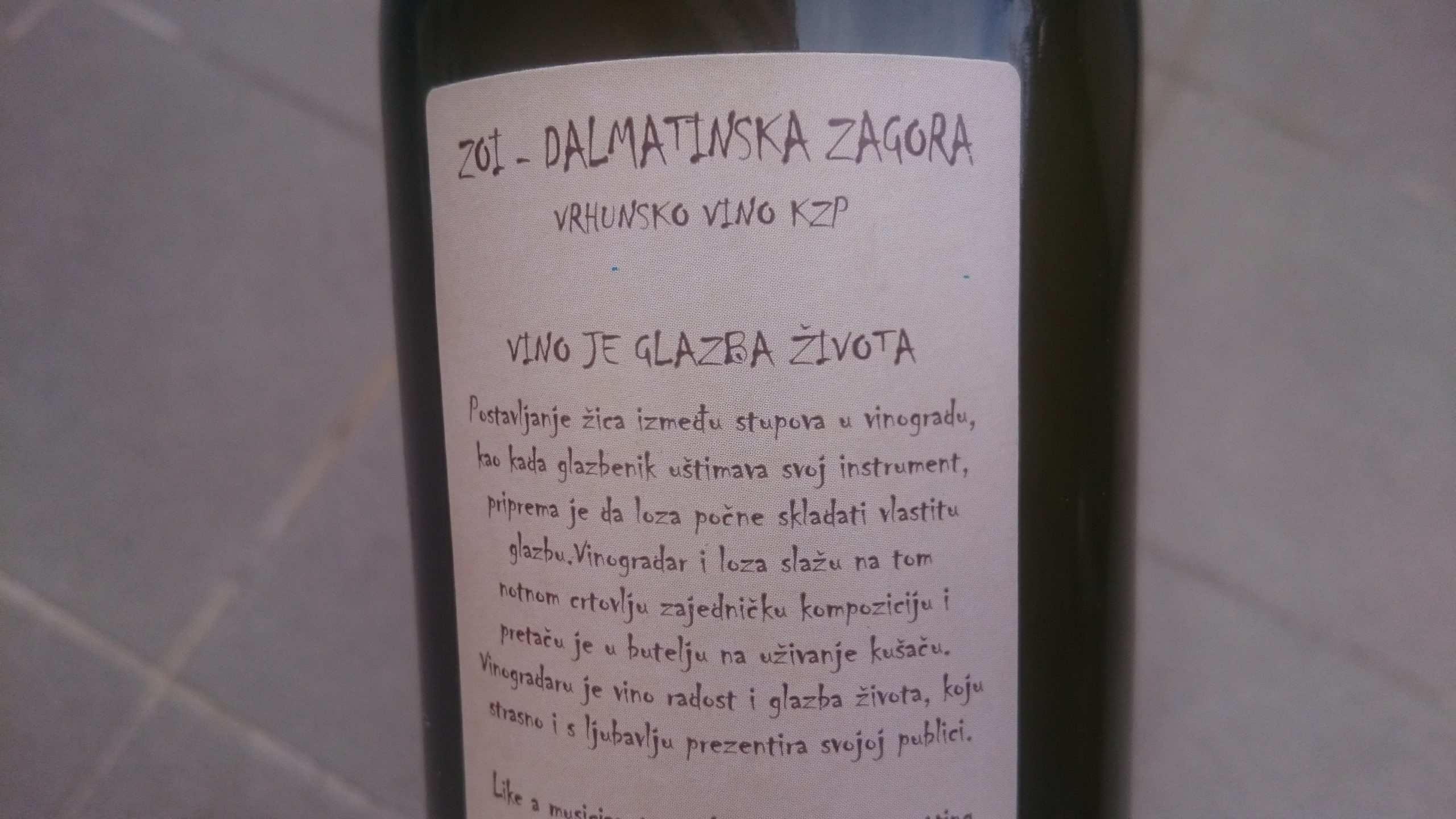
If you’ve recently looked closely at labels of Croatian wines (like I have a few days ago) you might have noticed that a lot of those wines carry a label saying “ZOI something-or-other”. The abbreviation stands for “Zaštićena oznaka izvornosti” (we will continue using ZOI in this article), and it means that it’s a wine with the “Protected Designation of Origin” (the English abbreviation used by the EU is PDO).
ZOI protection is actually the designation of a region, a specific location or sometimes even the type of soil used to label the product (wine). The label suggests that the quality and the characteristics of the product are the result of the specific geographical area, that the grapes used in the wine come exclusively from that area and that the process of winemaking is also taking place there. Croatia has decided to specify and protect 16 various winemaking areas in Croatia as ZOIs (Austria has so far protected around 30 such regions, and Hungary around 50 – and just in case you’re curious, France has around 500 ZOIs), and those are: Istočna kontinentalna Hrvatska (Eastern continental Croatia – includes the regions Slavonia and Podunavlje), Hrvatsko Podunavlje (Croatian Podunavlje), Slavonija, Zapadna kontinentalna Hrvatska (Western continental Croatia – includes the regions Moslavina, Prigorje-Bilogora, Zagorje-Međimurje, Plešivica and Pokuplje), Moslavina, Prigorje-Bilogora, Plešivica, Pokuplje, Zagorje-Međimurje, Primorska Hrvatska (Coastal Croatian – includes the regions Hrvatska Istra, Hrvatsko Primorje, Sjeverna Dalmacija, Dalmatinska Zagora, Srednja i južna Dalmacija and Dingač), Hrvatska Istra (Croatian Istria), Hrvatsko Primorje (Croatian Primorje), Sjeverna Dalmacija (Northern Dalmatia), Dalmatinska Zagora (Dalmatian Inland), Srednja i južna Dalmacija (Central and Southern Dalmatia) and Dingač.
As you can see, the Ministry of Agriculture has separated the winemaking Croatia into 4 broader regions, and then divided those 4 up to even smaller winemaking regions, so basically all of winemakers can use any of the two ZOIs under which they fall – for instance, a winemaker from Istria can decide to put ZOI Primorska Hrvatska or ZOI Hrvatska Istra on their label. The Ministry has also given very detailed boundaries for those regions, as well as the list of the varieties in each of the regions that are allowed to be protected by ZOI (you can’t, for instance, grow plavac mali on Plešivica, and label it ZOI Plešivica, because it does not belong there traditionally). Other characteristics of the wine that are required for the ZOI label are also carefully given for each region (see an example of the specifications document: link to the .pdf), and the protection also still allows the use of some traditional terms used to label wine, such as Vrhunsko vino s kontroliranim zemljopisnim podrijetlom (Premium wine with controlled geographic origin; this allows the wine to be labelled not only with the ZOI, but also with the label of the narrower region – a specific vineyard position). Also, wines can be labelled with other traditional terms, such as young wine (mlado vino), archive wine (arhivsko vino), opolo or others, under the strict terms given by the Ministry.
Croatian media has in 2015 reported that another wine has been given a ZOI, namely Muškat momjanski (moscatto from the Momjan region also called Moscato di Momiano as Italian is often used in the region); however, the search into the EU database of the protected PDOs e-bacchus (love the name, btw!) does not list Muškat momjanski, although the Ministry does have the full specification of that ZOI on their web-site as well. We’ll try and do a bit of research into why the 17th ZOI is not fully recognized as such, and report on the issue further, once we get some answers.
EDIT (March 29th, 2017): We asked the Ministry to explain to us this situation with Muškat momjanski, and they have replied that the Ministry has issued the national registration of the ZOI and has submitted the request to the European Commission for it to be registered on the EU level (through the system called e-ambrosia – just as cool a name!), the European registration has not come through yet, since it is still “in progress”. Hopefully soon it will be official throughout the EU, and visible in the e-bacchus database.







